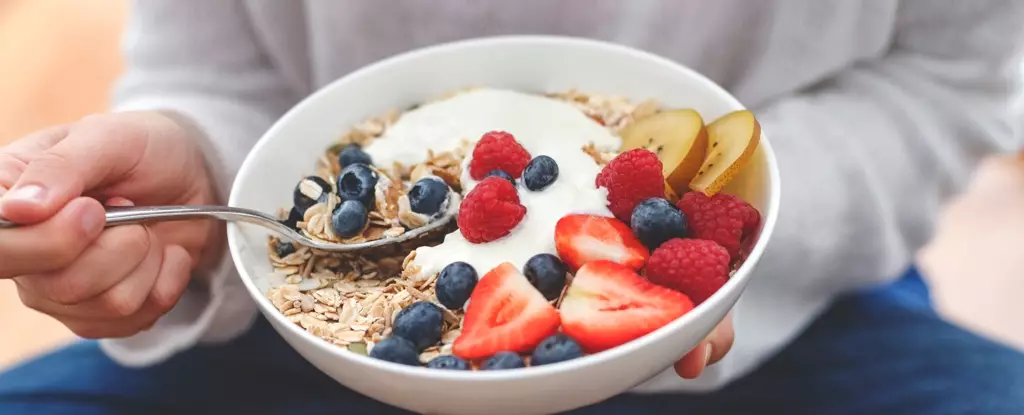In recent years, the exploration of the gut microbiome has brought about a transformative wave in the field of nutrition. Understanding the complex relationships between our diet and the microorganisms residing within our digestive systems has changed how we perceive dietary fiber. Previously clumped together with protein as a staple of healthy eating, fiber is now often hailed as the new champion of nutritional science. This could be largely attributed to the overwhelming evidence endorsing fiber’s role in maintaining digestive health, enhancing metabolic processes, and reducing the risk of chronic diseases.
Yet, as we witness fiber’s ascendance in the dietetic hierarchy, a critical examination reveals that not all fibers are created equal. Intriguing findings from recent research suggest that while fiber consumption is vital, the effectiveness of various types of fiber can differ dramatically.
Understanding the Fiber Landscape
Within the complex tapestry of dietary fiber, two main categories emerge: soluble and insoluble fibers. Soluble fibers, such as oat beta-glucan and wheat dextrin, dissolve in water and are readily fermented by gut bacteria. In contrast, insoluble fibers, like cellulose and resistant starch, do not dissolve in water and primarily remain intact, contributing bulk to stool formation. This fundamental distinction plays a crucial role in determining how different fibers affect health, weight management, and overall metabolic function.
A recent investigation spearheaded by researchers at the University of Arizona and the University of Vienna explored these differences through a study involving various fiber supplements. The outcomes were striking; beta-glucans, a specific type of soluble fiber primarily found in oats and barley, emerged as a standout.
The Remarkable Benefits of Beta-Glucan
In a groundbreaking mouse study conducted in 2024, beta-glucan demonstrated unique properties that set it apart from other fiber types. Despite being fed a high-fat diet, the cohort of mice receiving beta-glucan exhibited significant decreases in both body weight and body fat over the course of 18 weeks. This impressive finding challenges the traditional notion that all fibers behave in a similar manner, emphasizing the necessity of discerning between types of fiber in dietary recommendations.
Designing the study to test several fibers against a single control group of mice was a pivotal step in understanding how fiber impacts weight loss. Notably, beta-glucan not only reduced fat accumulation but also promoted a significant increase in the gut bacterium Ileibacterium, which has been linked to weight loss in other research. These developments provide compelling evidence that specific fibers can cultivate a healthier microbiome conducive to weight management.
Metabolic Mechanisms at Play
As the study progressed, researchers found that beta-glucan’s health benefits extend beyond mere weight loss. The mice consuming this fiber also exhibited elevated levels of butyrate in their guts, a short-chain fatty acid produced when gut bacteria ferment fiber. Butyrate plays a multitude of roles in our bodies, notably triggering the release of glucagon-like peptide-1 (GLP-1), a hormone that regulates insulin and appetite. Interestingly, this hormone is mimicked by popular medications like Ozempic, which are often prescribed for weight management in humans.
However, Frank Duca, a biomedical scientist involved in the research, suggests that there might be additional beneficial effects of butyrate beyond just appetite regulation. These could involve enhancing gut barrier health and positively influencing peripheral organs like the liver, suggesting a multifaceted approach to the health benefits of beta-glucan intake.
A Call to Action for Better Dietary Choices
Despite the clear advantages of beta-glucan and the significance of fiber in our diets, many individuals remain under-informed about their dietary fiber intake. Alarmingly, less than 5% of Americans meet the recommended daily intake of 25-30 grams of fiber, leaving a significant portion of the population susceptible to the myriad health issues associated with poor fiber consumption.
As the food industry continues to embrace fiber-fortified products, consumers should remain vigilant about the types of fibers they consume. Opting for whole foods rich in beta-glucans, like oats and barley, can be a beneficial step towards achieving optimal health. However, the research underscores a pressing need for ongoing studies to explore how these findings can be translated into actionable dietary guidelines for humans.
While the debate on fiber type and its implications continues to unfold, the emerging evidence around beta-glucan illustrates that choosing the right kind of fiber may well be pivotal in promoting health and managing weight. As we stand on the brink of a new understanding in nutritional science, the power of this particular fiber cannot be overstated.

